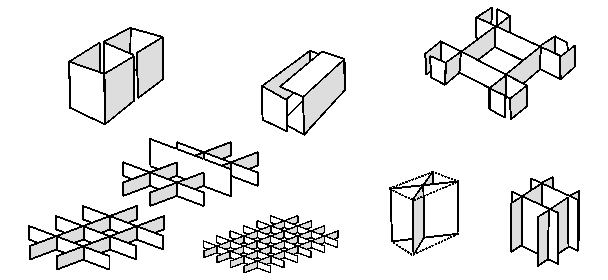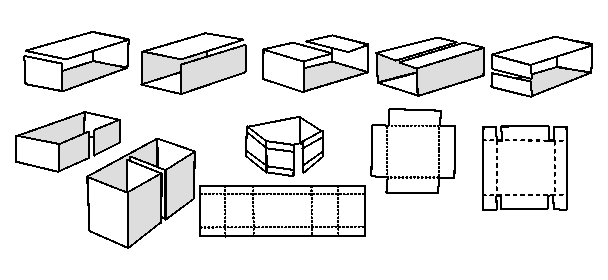Description
Packaging design is now a specialist field of study with its own qualifications although packaging engineers may also have backgrounds in science and engineering. Every detail of a package is given careful consideration to ensure the finished design not only protects and presents the product but can be manufactured cost effectively, makes efficient use of space and will meet all associated regulations for example.
Engineers develop packages from a wide variety of rigid and flexible materials. Some materials have scores or creases to allow controlled folding into package shapes and some may need corners strengthening. Methods of joining, hinging and interlocking will all have to be carefully considered to arrive at a design which is suitable for its purpose.
Activity:
Investigate a range of different package designs to see how they are closed - e.g. taped or interlocked. Why do you think the designer chose one method in preference to another?
Features and Applications
| Flaps
|
The size and design of flaps is very important, both as a means of gluing the box together and also to ensure that the top bottom and sides fit well together. The flaps should not be less than 8mm wide and wider than this for larger boxes or cartons. The ends of flaps which are to be glued should be cut at an angle to ensure that excess card does not interfere with the inside of the folded corner.
|
| Tabs
|
The shape of some boxes and cartons allows only very small glue flaps or tabs. Sometimes triangular shapes are needed and these can cause difficulties near tight corners. Joining curved shapes is done by creating a number of small tabs to follow the curve. Before attempting to glue these tabs, ease the crease by scoring along the edge.
|
| Interlocking
|
There are hundreds of methods of tabbing and flapping paper and card. Some of them are glued, stitched, taped or stapled and others are designed to interlock mechanically. Pull out flaps often have decorative shaping or other features. Corner flaps or tabs can be shaped and extended to create decorative shapes.
|
| Corners
|
When materials are folded up to form corners the inside of the corner often distorts. This is especially true of thicker materials because of the squeezing together or compression which occurs on the inside of any bend. The easiest way to deal with this is to drill or punch a small hole before attempting the fold as shown in corner number 1. This removes the problem area. When using materials such as sheet metal or plastics, which will stay in place when folded, the hole can be used to decorative effect to create open corners - perhaps revealing a lining material. See corner numbers 2 and 3. The shapes of the flaps or tabs can also be altered to produce a more interesting design out of a construction necessity as in corners 3 and 4.
|
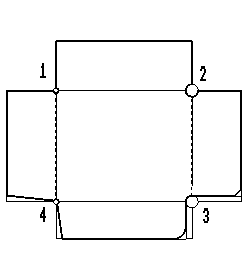
|
| Gussets
|
This simple fold and cut-out avoids complicated paper or card folding on corners. It is commonly used on pockets and folders as used for filing A4 paper.
|
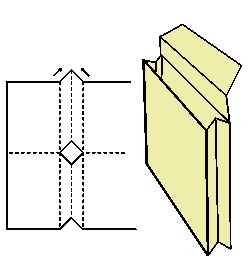
|
| Hinges
|
Simple hinges can be made in paper and card by using adhesive tapes, drinking straws, stitching, paper fasteners, rivets or by simple scoring and bending the card.
- ADHESIVE TAPE is used by alternatively sticking it to the top of one side of the hinge and the bottom of the other;
- DRINKING STRAWS can be used to mimic an actual butt or back flap hinge;
- STITCHING like adhesive tape, proceeds from the top of one side, down in between the two pieces and then up through the opposite side;
|
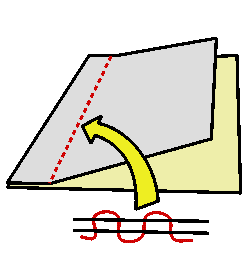
|
| Separators
|
|
| Sleeves
|
|



